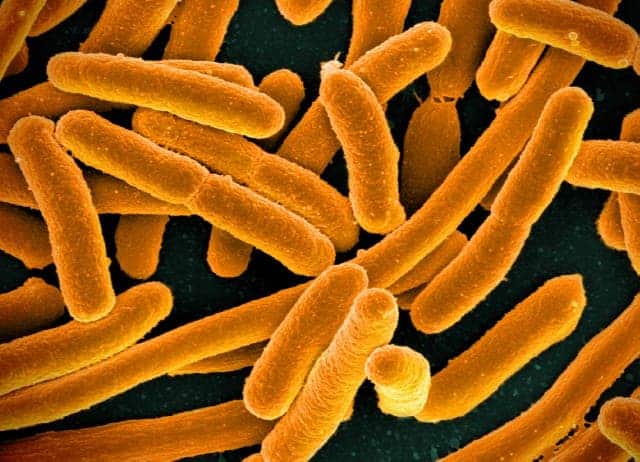
The biological world is largely split into two groups: those which convert CO2 into biomass (autotrophs), and those which consume organic compounds (heterotrophs). There is a large evolutionary line between these two groups — you can either be one or the other.
Or at least, that was the case until now. A group of researchers have accomplished the remarkable feat of transforming E. coli to consume carbon dioxide instead of the organic molecules it usually munches on.
The change cannot be overstated: it’s a complete change of lifestyle, a full metabolic U-turn — not for sucking the CO2 out of the air, but rather for better genetic studies, ethanol production, and potentially even food.
While plants and cyanobacteria thrive through photosynthesis, they are hard to genetically modify and study. This means that using them as biological factories is very challenging and time-consuming. Meanwhile, E. coli is resilient and relatively easy to engineer. It grows quickly and is an optimal candidate for studies — but it prefers to grow on sugars instead of CO2 (which it emits as waste).
Ron Milo, a systems biologist at the Weizmann Institute of Science in Rehovot, Israel, and his team have worked for more than 10 years trying to switch E. coli’s diet. They made an important breakthrough in 2016, when they first reported a strain that consumed CO2 — but it was only a small fraction of the organism’s diet, and the rest was still organic bactereia. That’s all changed now.
The team managed to create a strain of E. coli that gets all its carbon from CO2, not from other foods.
It took a combination of genetic engineering and evolution. First, the team gave the bacterium genes that encode a pair of specific enzymes — enzymes used by photosynthetic organisms to convert CO2 into organic carbon. Plants and cyanobacteria carry photosynthesis, but this wasn’t possible for E. coli, so a different route had to be taken. But even so, the bacterium would refuse to eat CO2.
So what researchers did was let evolution take its course. Well, rather push evolution to the course they wanted. They cultured successive generations of the modified E. coli for a year, giving them little quantities of sugar, and high concentrations of CO2. They wanted the bacteria to develop mutations to adapt to this new diet — and it worked. After some 200 days, the first ones capable of eating CO2 emerged. After another 100 days, the CO2-eating strains became dominant.
In the end, the team was able to obtain a strain that can survive on ingesting CO2 alone. They can still grow on sugar, and given the chance, they will still take sugar over CO2 — but they can survive without sugar. Remarkably, the E. coli’s evolutive jump (the one which allowed it to consume CO2 more efficiently) involved just 11 genes. Researchers are now trying to understand how this change exactly happened.
There are still some drawbacks. The CO2-munching bacteria divide every 18 hours — compared to just 20 minutes for the sugar-eating strains. They are also not able to subsist without sugar on atmospheric levels of CO2 (0.041%). Nevertheless, it’s an impressive proof of concept — a milestone in bacteria engineering, which could have major implications for renewable energy, food, and biology studies. E. coli is used to make synthetic versions of useful chemicals such as insulin. This could expand the products that the bacteria can make.
But it will be a while before that happens. The team needs to better understand the subtleties of the process to make it more efficient and stable — only then could it be truly used for practical purposes.
The study has been published in Cell.



